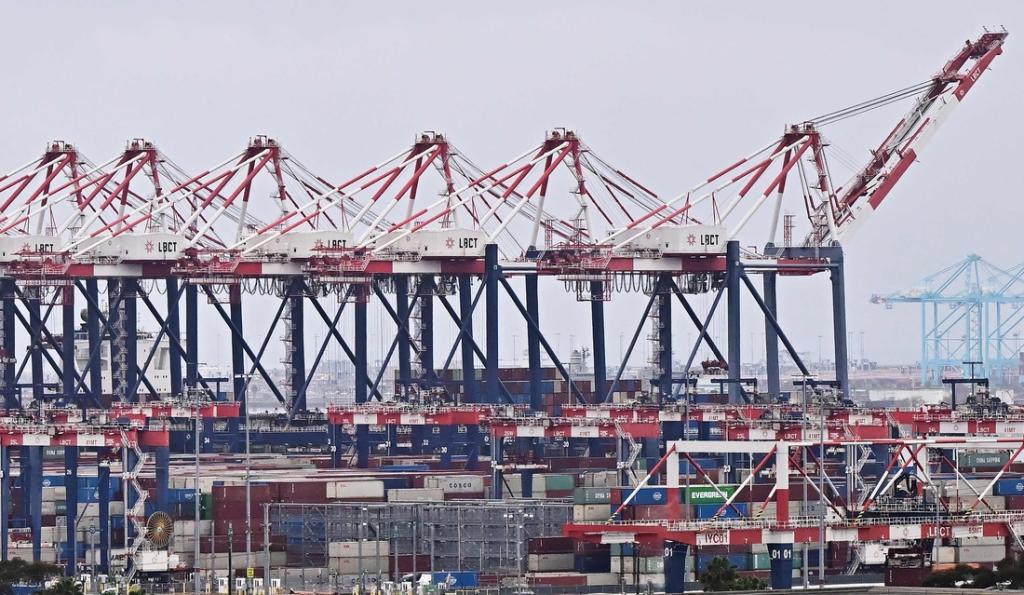Fuel Prices Surge as Global Oil Markets Shift Dynamics
Discover how global oil market fluctuations are driving domestic fuel price hikes and learn smart strategies to navigate rising costs.

Key Points
- Domestic fuel prices in Vietnam have recently increased due to ongoing fluctuations in the global oil market influenced by geopolitical tensions.
- Consumers are facing multiple price adjustments in gasoline and diesel, with predictions of further increases in the near future.
- Staying informed about fuel price trends and exploring alternative transportation options can help mitigate the financial impact on consumers.
The recent announcements regarding adjustments in fuel prices reveal a complex interplay between global oil market fluctuations and local economic conditions. As nations brace themselves against the backdrop of a dynamically shifting oil landscape, consumers are feeling the pinch. In this blog post, we delve into the current state of domestic fuel prices amidst ongoing global market changes, offering you a clearer picture of what is happening and what to expect.
Current Adjustments in Fuel Pricing
On February 20, 2024, the
and the
announced a gas price increase, marking another chapter in the saga of spiraling fuel costs. Specifically, local prices for E5 RON 92 gasoline rose by 260 VND per liter, reaching a new cap of 20,850 VND, while RON 95 followed suit at 21,330 VND per liter. Interestingly, while gasoline prices escalated, certain diesel prices saw a minor decline, demonstrating a mixed approach to price regulation.

This price alteration is symptomatic of broader market trends. Since the start of the year, price shifts for gasoline and diesel have been frequent, with gasoline prices increasing five times against three reductions.
Global Influences on Local Prices
The volatility in fuel prices can largely be attributed to disruptions in global supply chains. Recent reports indicate that up to 380,000 barrels per day were lost from Russian supply due to drone attacks impacting oil infrastructure. As noted by
, these geopolitical tensions have not only restricted production but have also maintained upward pressure on oil prices internationally. Notably, both Brent and WTI crude oil have seen minor price upticks. On February 20, Brent traded at $76.04 per barrel, while WTI stood at $72.25 per barrel—this being the highest closing rate observed in over a week.
Predictions and Market Reactions
Experts from the Vietnam Petroleum Institute suggest that the ongoing increases in global crude prices could lead to further domestic price hikes. For instance, projections for the next adjustment cycle indicated a possible increase of up to 250 VND per liter for gasoline. Such trends underline the sensitivity of fuel prices to both domestic and external factors, reminding us of the complexity surrounding energy economics.

The policy maneuvers of the Vietnamese government play a critical role in this scenario. The current reliance on price stabilization funds points to an effort to shield consumers from the full brunt of market volatility. However, with the stabilization fund reportedly decreasing over the last five quarters, we may soon see more pronounced price implications for consumers.
Consumer Implications
As consumers grapple with these rising costs, it's crucial to adopt strategies that can mitigate the financial impact. Some practical steps include:
Understanding fuel pricing mechanisms empowers consumers to make informed decisions. By being proactive about fuel consumption and exploring alternatives, we can collectively navigate the challenges posed by rising prices.
In summary, the rise in domestic fuel prices is not merely a local issue but reflects a global trend influenced by international market conditions and geopolitical dynamics. As prices fluctuate, awareness and preparedness become essential tools for consumers. Staying informed about these developments will enable us to better cope with the economic impact of fuel price changes while advocating for more stable energy policies in the future.


